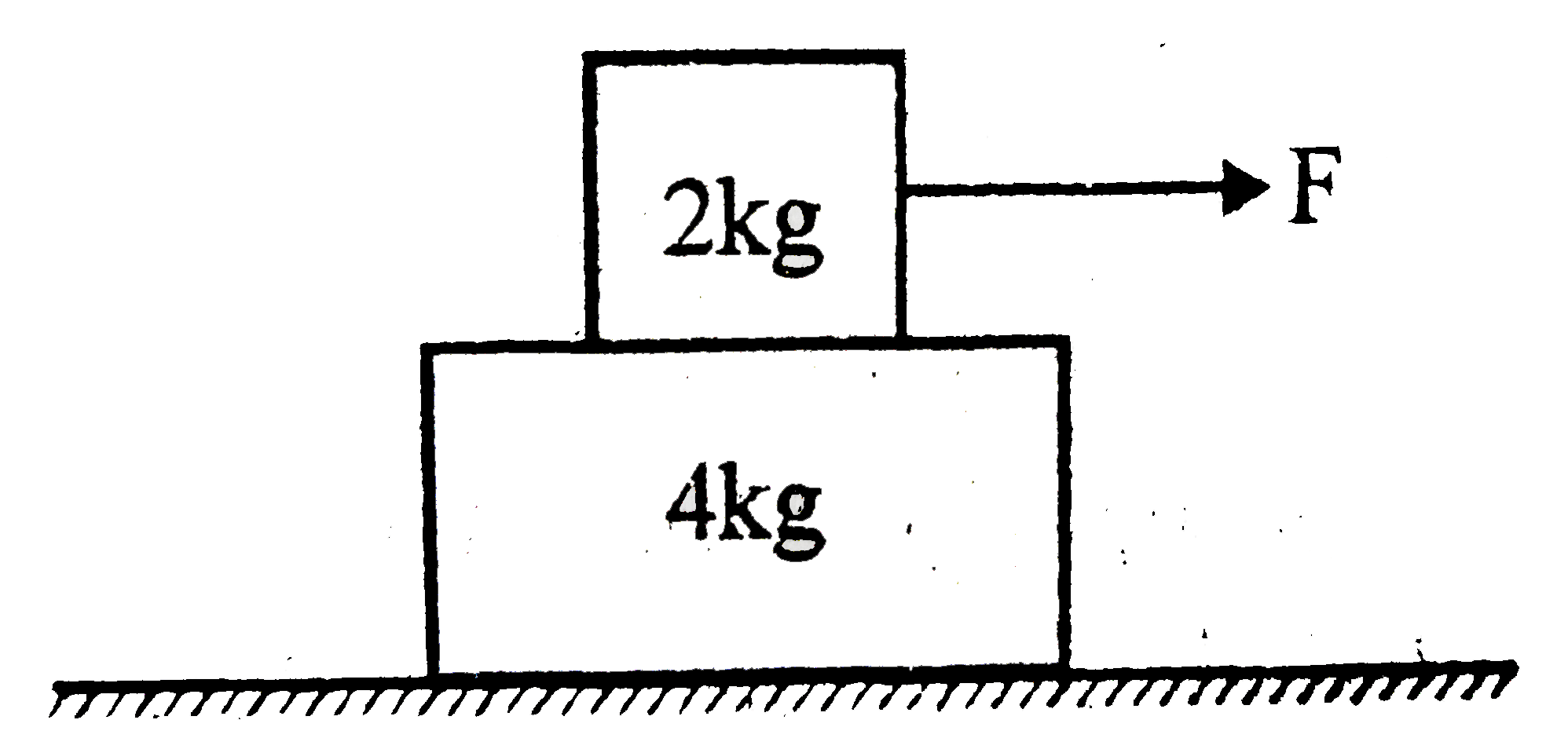The acceleration of the 2 kg block if the free end of string is pulled with a force of 20 N as shown is

zero
upwards
downward
The correct Answer is:B
(b) Upward force on 2 kg block in upward direction will be 40 N(=2F) in the form of tension.

Topper's Solved these Questions
- LAWS OF MOTIONBOOK - DC PANDEYCHAPTER - LAWS OF MOTIONEXERCISE - Check point 5.4
20 Videos
- LAWS OF MOTIONBOOK - DC PANDEYCHAPTER - LAWS OF MOTIONEXERCISE - Chapter exercises (A) Taking it together
71 Videos
- LAWS OF MOTIONBOOK - DC PANDEYCHAPTER - LAWS OF MOTIONEXERCISE - Check point 5.2
15 Videos
- KINEMATICS 1BOOK - DC PANDEYCHAPTER - KINEMATICS 1EXERCISE - INTEGER_TYPE
15 Videos
- LAWS OF THERMODYNAMICSBOOK - DC PANDEYCHAPTER - LAWS OF THERMODYNAMICSEXERCISE - Level 2 Subjective
18 Videos
Similar Questions
Acceleration of the block of mass 12kg when it is pushed with a force of 500N as shown is?
View SolutionFigure shows two block system, 4 kg block rests on a smooth horizontal surface, upper surface of 4 kg is rough. A block of mass 2 kg is placed on its upper surface. The acceleration of upper block with respect to earth when 4 kg mass is pulled by a force of 30 N, is

View Solution
Knowledge Check
A block of mass M is pulled on a smooth horizontal table by a string making an angle θ with the horizontal as shown in figure. If the acceleration of the block is a find the force applied by the string and by the table N on the block.
 AT=Matanθ , N=(Mg−Matanθ)BT=Mgcosθ , N=(Mg−Matanθ)CT=Macosθ , N=(Mg−Macosθ)DT=Macosθ , N=(Mg−Matanθ)
AT=Matanθ , N=(Mg−Matanθ)BT=Mgcosθ , N=(Mg−Matanθ)CT=Macosθ , N=(Mg−Macosθ)DT=Macosθ , N=(Mg−Matanθ)Consider the shown arrangement. The coefficient of friction between the two blocks is 0.5 . There is no friction between the 4 kg block and of 12 N is applied on the 2 kg block as shown in the figure, the acceleration of the 4 kg block would be
 A2.5m/s2B2m/s2C5m/s2DNone
A2.5m/s2B2m/s2C5m/s2DNone
A block of mass 2kg is placed on a trolley of mass 20 kg free to move on a frictionless floor. What are the frictional force, accelerations of the block and trolley if the block is pulled by a force of 3 N ? The coefficient of friction between block and trolley is 0.25. What will be the values of all three if the block is pulled by 8 N force ? At what value of the applied force will the bodies just tend to separate ?
[Hint : So long as the force applied does not produce the limiting frictional force the two will move with common acceleration. When the force applied exceeds that limiting value the block will move on the trolley with a different acceleration]
View SolutionTwo identical blocks each having a mass of 20 kg are connected to each other by a light inextensible string as shown and as placed over a rough surface. Pulley are connected to the blocks.
Find acceleration of the blocks after one second after the application of the time varying force of 40 t N, where t is in second.

View SolutionIn the arrangement shown in the fig, end A of the string is being pulled with a constant horizontal velocity of 6m/s. The block is free to slide on the horizontal surface and all string segments are horizontal. Find the velocity of point P on the thread.

View SolutionTwo masses of 5 kg and 10 kg are suspended from a fixed support as shown in the figure. The system is pulled downwards with a force of 150 N applied to the lower mass. The string attached to the support breaks and the system accelerates downwards. If the downward force continues to act, the acceleration of the center of mass of the system is :

View Solution
Two blocks of masses 5 kg and 10 kg are connected by a massless spring as shown in the diagram. A force of 100 N acts on 10kg mass as shown. At a certain instant the acceleration of 5 kg mass is 12 m/s2 find the force in the spring and acceleration of 10 kg mass.
View SolutionA block of mass 10 kg is hanging over a smooth and light pulley through a light string and the other end of the string is pulled down by a constant force F. The kinetic energy of the block increases by 20 J in 1 s

View Solution
